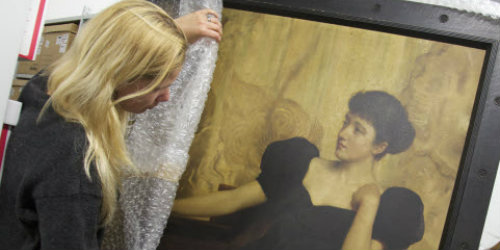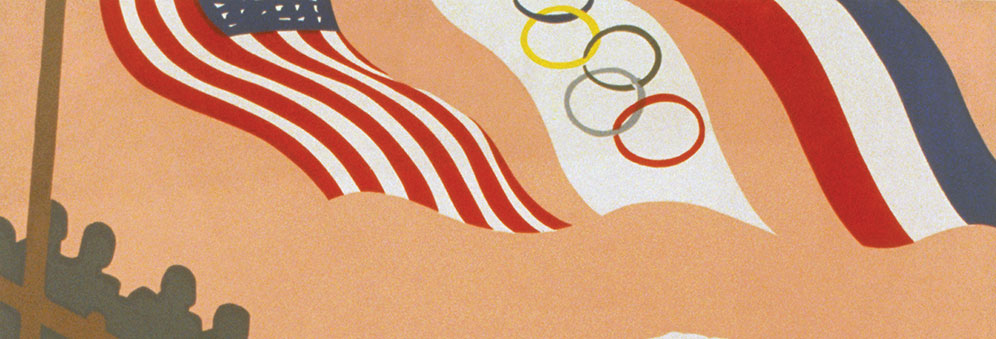Visualising the Olympics
Visual imagery depicting the Olympics projects a host nation's cultural identity onto the world stage, providing fascinating insights into the socio-economic and political contexts of the time.
Dr Mike O'Mahony's research into the visual representation of sport, with its particular focus on the Olympics, has raised considerable interest in the public and academic worlds, culminating in the publication of two books and leading to the development of a new area of academic enquiry.
Supported by a two-year Leverhulme Fellowship, Dr O'Mahony's research explored the visual representation of the Olympics since 1894, when the Olympic Games were first officially revived for the modern era. Throughout this period the Olympics have been inextricably linked to art and culture.
Traditionally, however, art historians have not engaged widely with the visual representation of sport, and sport history has tended to focus on textual evidence. Dr O'Mahony's work brings these two disciplines together to bridge the gap between the disciplines of sport history and art history.
International Olympic Committee founder Pierre de Coubertin's efforts to revive the cultural aspect of the ancient Games demonstrates this link. Between 1912 and 1948 for example, the Games included actual art competitions, complete with bronze, silver and gold medals, and every Games since has included programmes of cultural activities.
Today, the opening ceremonies themselves are theatrical extravaganzas, highly choreographed and designed with cinematic ambition, dazzling audiences at the Games as well as the millions of other spectators watching on TV.
Enhancing cultural identity through mass media
Dr O'Mahony describes sport as a complex and historically significant social practice, pointing to the interest in the opening ceremony of the 2008 Beijing Games, which China used to enhance its cultural identity on the world stage.
"Through the mass medium of live television coverage, the opening ceremony of the Games thus presented an image of China that reportedly was watched by one third of the world's population. It was a mega spectacle." - Dr Mike O'Mahony
Throughout the twentieth century, the Games have become increasingly accessible through the development of mass media. Accordingly, people now experienced the Games second-hand, through visual imagery framed by the media which in turn, has shaped broader understandings of the Games as well as how we engage with this body of material.
Analysing audience engagement to gain insights
Dr O'Mahony's findings analyses this engagement and how audiences relate to material that reflects the concerns of the times, including the rise of National Socialism in the 1930s, the Cold War, and broader issues of class, race and gender.
With the forthcoming London Olympics and the exhibitions that have accompanied the lead-up to the games, his research has heightened interest in sport and visual representation across academics and the public alike. The London Olympics present interesting developments around the choice and use of the visual, such as the construction of Anish Kapoor's sculpture alongside the Olympic Park and the widespread presentation of Jessica Ennis as the 2012 'poster girl'.
Dr O'Mahony's research has taken him on journeys from London to the Olympic Museum in Lausanne, Switzerland, and the archives of The LA84 Foundation in Los Angeles, USA. He has published his findings, Olympic Visions: Images of the Games through History, with Reaktion Books, London, and has also produced an edited volume entitled The Visual in Sport, looking at sport imagery generally, co-edited by sport historian Mike Huggins.
It will be interesting to see how the visual representation of the latest games will reflect the social and economic trends of the moment and how London will shape and project its identity, giving further scope to this new field of academic enquiry.
Dr Mike O'Mahoney
Related research groups
Related publications
 Study Art History
Study Art History
Join a thriving centre that brings together fresh thinking across the visual arts.
